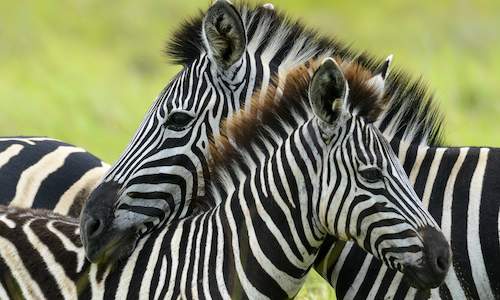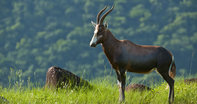
Blesbok
Name
Blesbok (Damaliscus pygargus phillipsi)
Appearance
The colour of the blesbok is a gradient of brown, being dark brown on the body, a lighter shade on the saddle of the back, and even lighter shade on the rump. The legs are patched white behind the top of the front two, and the lower legs are whitish.
Blesbok rams and ewes appear physically similar, however ewes’ horns are slightly more slender. An identifying feature of the blesbok is its prominent white face and thin horizontal brown stripe above the eyes. Both rams and ewes can weigh up to 85 kg.
Blesbok Diet
The blesbok is a grazer, preferring short grass and particularly new green grass growing after a veld fire.
Blesbok Breeding
The blesbok breeds seasonally, and rutting occurs during March to May. After a gestation period of about 240 days, birthing peaks in the summer months of November and December. Females give birth to a single calf.
Blesbok Behaviour
The blesbok and bontebok are closely related. Historically, the bontebok and blesbok inhabited different areas of land in South Africa, however interbreeding has occurred between the two subspecies. They prefer a habitat of open grasslands with water.
Field Notes
The name ‘blesbok’ derives from the Dutch term for "blaze", referring to its white forehead. Being closely related to the bontebok, a great deal of interbreeding between the two subspecies has made the exact numbers of purebred species debatable and uncertain.

Learning about the mammals of South Africa is now so much easier for all South Africans - SouthAfrica.co.za is an excellent source of inform...
more
 Learning about the mammals of South Africa is now so much easier for all South Africans - SouthAfrica.co.za is an excellent source of inform...
Learning about the mammals of South Africa is now so much easier for all South Africans - SouthAfrica.co.za is an excellent source of inform...